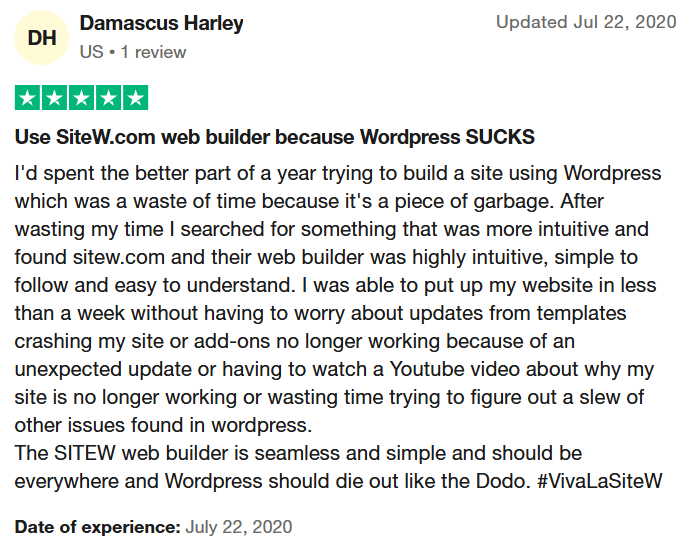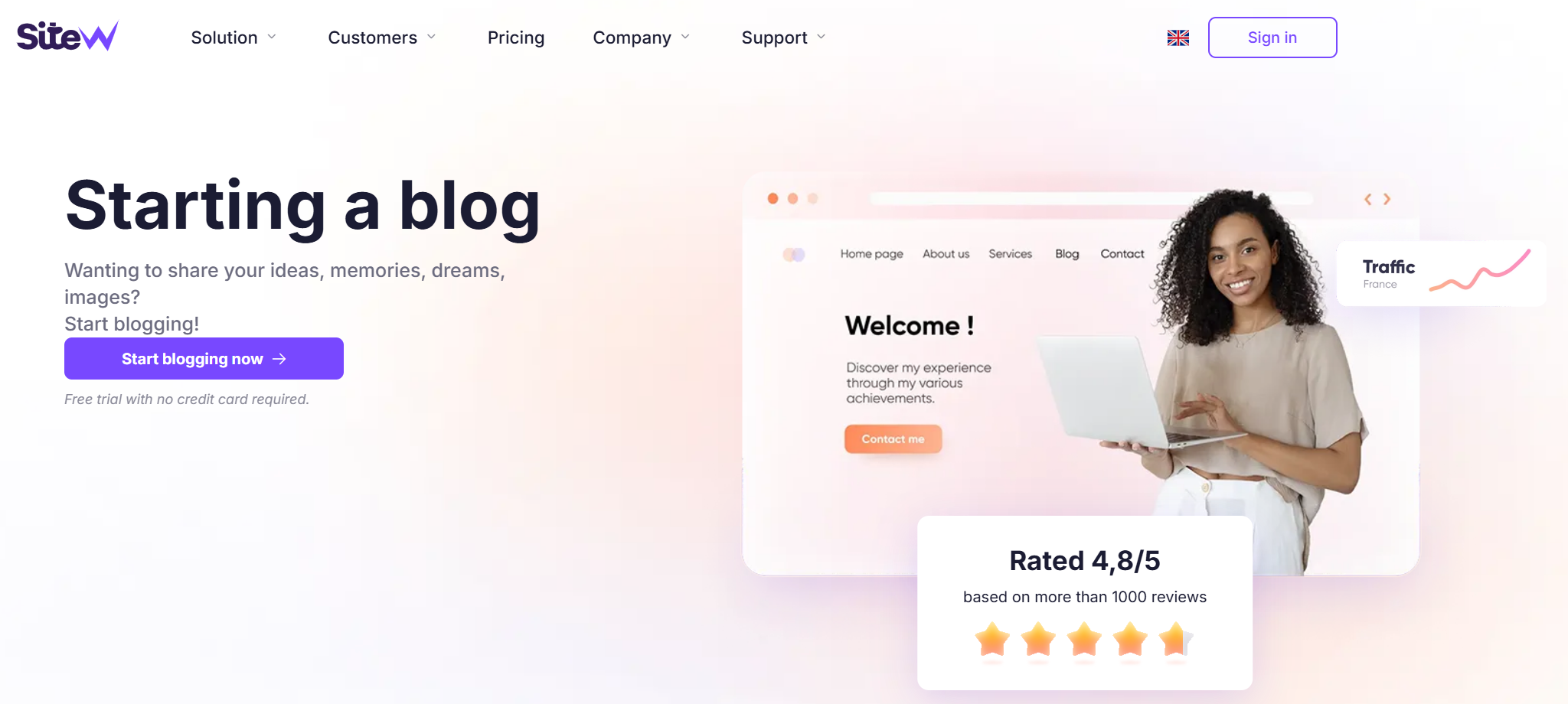What is churn rate?
The churn rate refers to the percentage of customers who stop purchasing from a brand during a specific period. Companies can evaluate this factor on an annual, monthly, weekly, or daily basis.

Churn rate is a key measure that can highlight gaps in a business strategy and identify areas for improvement. It's an essential indicator as it helps track customer loyalty and evaluate the overall health of the customer portfolio.
In general, a high churn rate indicates a problem with customer satisfaction or retention.
Churn rate importance
Churn rate is a crucial indicator because lost customers translate into income losses. The higher the churn rate, the more your bottom line will suffer.
Managing this indicator offers several advantages:
-
Boost in customer loyalty: Reducing the churn rate improves loyalty and enhances cost-effectiveness.
-
Boost in awareness: You can use churn rate data to evaluate the impact of your marketing campaigns and determine if your message resonates with your audience.
-
Product quality: When you release new features, monitor your churn rate to see how your audience perceives the changes.
-
Cost reduction: Convincing a new customer costs more than retaining an existing one. Companies that lose buyers don't just lose the sales generated by those customers: they also have to bear the cost of acquiring new ones. ↘️💲
Examples of churn rate
Churn rate varies from one company to another, and from one sector to another. Here are a few examples to give a better idea of how this measure affects businesses and associations differently.
The average churn rate for e-commerce brands can reach from 70% to 80%. With such available options for consumers, the companies of this sector can give priority to customer's loyalty to build long-term relationships.
SaaS businesses often rely on subscriptions, and churn rate is a key factor in determining success. The average churn rate in this sector is 14%.
The logistics sector faces volatility in daily activities and customer loyalty.
The average churn rate in logistics is 40%, meaning businesses in this sector should make an effort to build strong relationships with their customers to encourage order renewals.

How to calculate churn rate: 4 packages
Here are several different methods to calculate churn rate, depending on the nature of your business. Below are the 4 most common approaches:
1. Customers' churn rate
Churn rate is a key performance indicator (KPI) of customer experience that is simple yet important. You can use this method to analyze churn over any period - whether it's a year, month, or day.
For example...
Imagine you want to measure your churn rate for September. At the beginning of the month, you had 250 customers, but by the end, you only had 215. Here is how you calculate it: Substract 215 from 250 to get 35. Divide 35 by 250 to get 0.14. Multiply 0.14 by 100 to get 14%. Your churn rate for September is 14%.
2. Churn rate of gross receipts
Not all customers generate the same revenue; some spend more than others.
The churn rate of gross receipts provides additional information on how customer churn impacts your revenue. This measure is especially useful for businesses that work with a subscription model and have monthly recurring revenue (MRR).
For example...
To measure the churn rate of your turnover for January, follow these steps: Imagine your company has an MRR of $50,000, and you lost $2,000 in January. Divide $2,000 by $50,000 to get 0.04. Multiply 0.04 by 100 to get 4%. The churn rate of your gross receipts for January is 4%.
3. Adapted churn rate
If your business is quickly developing, you will need a more complex method to get a realistic view of your customers' churn rate.
For example...
Growing companies may experience a significant increase in the number of new customers and churn during the same period. In this case, a method that only considers lost customsers don't provide an accurate picture, as the total number of customers may also be increasing.
4. Seasonal churn rate
Many companies experience off-peak periods throughout the year. For instance, swimming pools are more frequented during the summer, while skating rinks see more visitors in the winter. 🏊♂️⛸️

How to track churn rate?
Now that you know why churn rate is important and how to calculate it, you need a tracking system to help you reduce it. This system should rely on the following key principles:
-
Define a calendar: You can track your churn rate over a specific period, or if you prefer, set up a continuous calculation to monitor its evolution over time. 📅
-
Define your churn rate: Choose the type of churn rate that interests you (e.g., customer churn, revenue churn, etc.). You can also mix different types.
-
Track performances: Use tools such as customer experience software to track feedback, churn rate, and other loyalty indicators.
-
Analyze and adapt: Regularly track your metrics in both the short and long term to identify areas for improvement.
What are the signs of a churn problem?
In general, a "healthy" monthly churn rate is between 5% and 7%.
Within this range, your company is losing customers, but not enough that you can't balance the situation by acquiring new ones or expanding your existing customer base through product improvements, new features, etc.
So, when should you start worrying? 🙁
Each company is different, and what is considered "high" for one may be acceptable for another.
However, there are certain warning signals that you need to pay attention to...
-
Churn rate exceeds the number of new customers: You need to worry if you're loosing more customers than you're acquiring regularly.
-
Customer lifetime reduces: In most cases, the longer your customers stay with you, the higher their lifetimevalue (LTV) should be.
-
Your churn rate exceeds 10%: As mentioned above, a churn rate between 5% and 7% is considered average. However, if your churn rate starts reaching a two-digit figure, it signals that something in your process isn't working.
-
More downgrading than upgrading: If you offer different packages, you should see more users upgrading than downgrading.
Even if your downgrade rate is low, it's still something worth trying to reduce. This said, even if you're unsure where to start, we are here to help you! 💪
13 tips to reduce your churn rate
1. Bet on your best customers
Instead of dedicating time and resources to customer loyalty programs, focus your attention on your most profitable customers. 🤑
One of the main reasons of downgrades is that your product or service doesn't suit the consumer's needs.
Create customer profiles to understand the demographic characteristics and purchase behaviours of your target consumers. 👥🎯
During the sale process, make sure that the customer's objectives are clear and that you are confident your product can help them achieve these goals.
Target the right audience
If your first interaction with a user is based on a free offer or discount, you might attract customers who don't value the product as much. These customers, focused on price, are more likely to leave. It's better to target consumers who genuinely appreciate your products and consider investing in quality as worthwhile.
2. Define a roadmap for your new customers
If a customer doesn't immediately understand (or very easily) how to use your product or service, they may lose interest quickly.
To make things easier, it's helpful to implement a welcome process for new customers or a roadmap to guide them through the instructions of your offers.
It's important to continuously improve and keep an eye on weak points or obstacles. 👁️
3. Offer incitations
Give your customers a reason to stay by offering them something special such as a discount or loyalty card.

To determine the perfect timing for implementing these incitations, take some settings into consideration such as calendar (end of the contract) or the customer's specific needs.
4. Ask for feedback
To get to the root of your company's specific problems, you should take the time to collect feedback regularly and quickly. 💬

You can gather feedback through methods like implementing a survey or online form, and by sending an email campaign. 📝📧
By creating your website on our web editor, you'll have the possibility to create newsletters, enable visitors to leave comments or customer reviews, and insert surveys into your web pages.
Create a website
5. Analyse the reasons for churn as soon as it occurs
If you wait until a customer leaves your company, it's already too late to take action. Instead, you should react proactively to identify strategies that can prevent churn before it happens.
The key is to use insights from downgraded and satisfied customers to predict the main signals of satisfaction and dissatisfaction. By engaging with customers at the right time, you can address their concerns and save the relationship before they decide to leave.
6. Stay competitive
Market conditions are constantly evolving. As new technologies emerge, your customer's needs also change.
Companies that focus on the future - including technical trends and advances - stay ahead and rank higher to avoid disruptions.
7. Offer perfect customer service
One of the best ways to reduce your churn rate is to provide exceptional service to your customers.
Don't underestimate the negative impact of poor support!
According to an Oracle survey on the impact of customer experience, the two main reasons consumers leave a company are incompetence and rudeness of the staff, as well as slow service.
So make sure you provide first-rate customer service that prioritizes users happy first and foremost. 😊
Consumers tend to stay loyal to brands that have built a community around their products or services.
For example, a brand can create a Facebook group or organize special events for its best customers.
Another great option for building a community is
starting a blog or
forum. If you don't have one yet, you can easily create your blog with our website tool in just a few clicks - no technical knowledge required!
Create a blog or forum
9. Raise customers
You must provide enough quality, educational material to boost loyalty and reduce your churn rate. Offer free learning courses, webinars, video tutorials, and product demonstrations - everything your customers need to stay informed. 📚
☝ In other words, you must provide them with effective tools and a learning course on how to use these tools in a profitable manner.
10. Identify customers who are likely to leave
The best way to avoid churn is to prevent it from occuring, right?
There are always customers who are more likely to leave than others, so it's important to identify them. By doing so, you can reach out to them in time and encourage them to stay.
Good news! It's easy to identify "risky" customers. For example, you can determine users who haven't been contacted for a long time.
11. Pay attention to complaints
Complaints often mean that the largest part of the problem is hidden.
Did you know that 96% of unsatisfied customers don't complain, and 91% of them leave?
Just one negative experience is enough for 32% of users to stop interacting with a brand they previously liked!
So, it's important to take complaints seriously and follow up.
12. Make sure your experts deal with cancellations
You must hire the best sales experts to boost your loyalty results.
Identify your most eloquent and convincing sales representatives, and encourage them to reach out to customers who have decided to leave. They can help prevent churn by providing strong arguments.
13. Offer long-term contracts
Why not keep your customers engaged for longer? ⌛
Instead of offering monthly contrats, try providing a long-term subscription plan. This gives your customers enough time to fully test the product and experience its benefits.

Now that you know you can't afford to lose too many customers, it's better to focus on how to retain them.
It's also important to realize that many churn reasons aren't related to the product itself, but are primarily due to poor customer support!
Finally, retaining your customers is easy. It's all about analyzing churn reasons and taking action accordingly. 🚀








